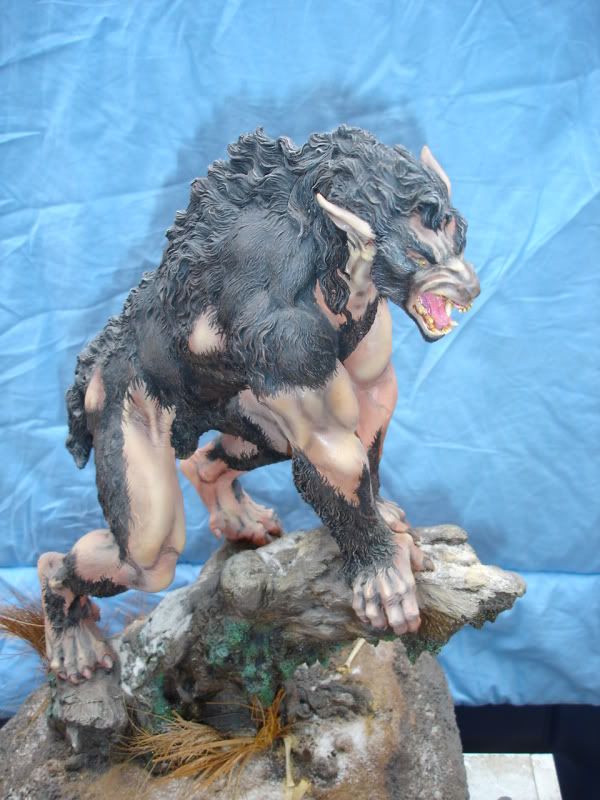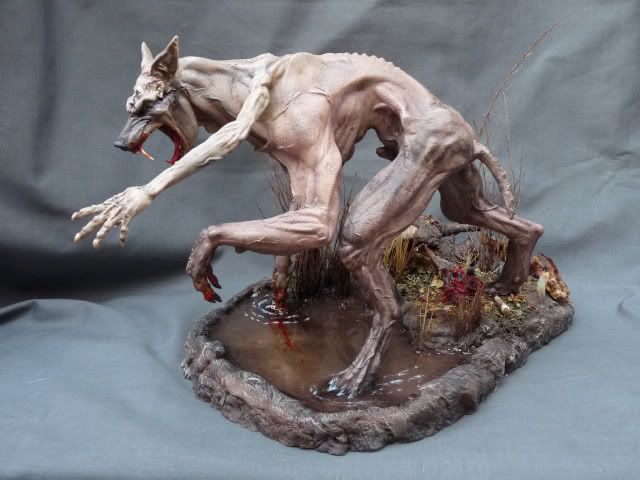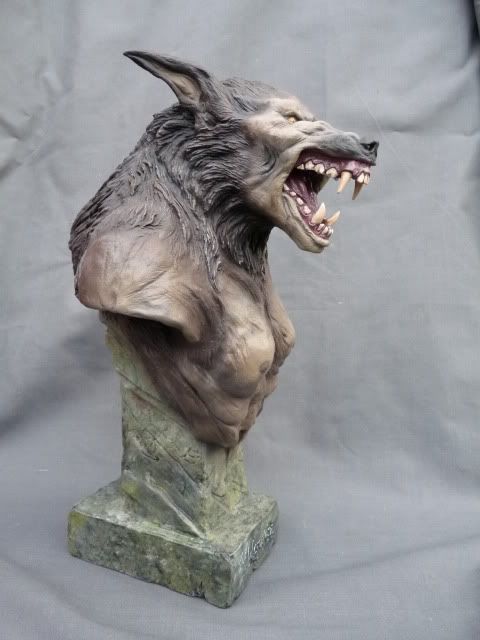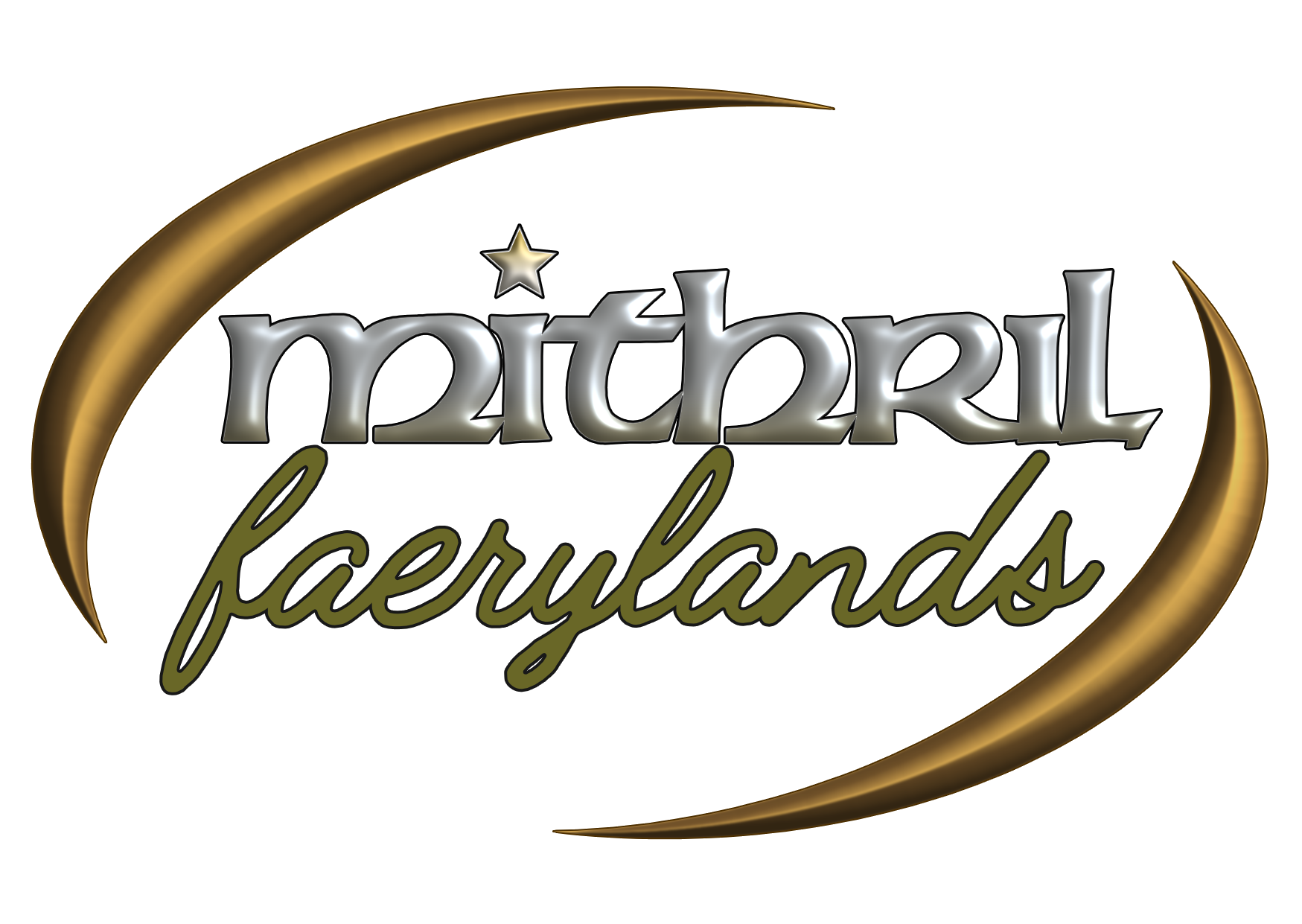Concerning Werewolves
MMP › Mithril in Middle-Earth › The Prancing Pony › Concerning Werewolves
- This topic has 5 replies, 4 voices, and was last updated 14 years, 8 months ago by Arthadan.
-
AuthorPosts
-
March 7, 2011 at 7:42 pm #574
Hi all,
After a conversation with a friend of mine, I did some research in the lore and the conclusion is Werewolves are not biped:
Quote:Then Morgoth recalled the doom of Huan, and he chose one from among the whelps of the race of Draugluin; and he fed him with his own hand upon living flesh, and put his power upon him. Swiftly the wolf grew, until he could creep into no den, but lay huge and hungry before the feet of Morgoth. There the fire and anguish of hell entered into him, and he became filled with a devouring spirit, tormented, terrible, and strong. Carcharoth, the Red Maw, he is named in the tales of those days, and Anfauglir, the Jaws of Thirst. And Morgoth set him to lie unsleeping before the doors of Angband, lest Huan come.As we all know, Draugluin was a werewolf under Sauron’s command in Tol-in-Gaurhoth.
Quote:By the counsel of Huan and the arts of Lúthien he was arrayed now in the hame of Draugluin, and she in the winged fell of ThurIngwëthil. Beren became in all things like a werewolf to look upon, save that in his eyes there shone a spirit grim indeed but clean;Here Beren removes Draugluin’s hame he has been using to disguise himself:
Quote:As a dead beast Beren lay upon the ground; but Lúthien touching him with her hand aroused him, and he cast aside the wolf-hame. Then he drew forth the knife Angrist; and from the iron claws that held it he cut a Silmaril.And yet another quote:
Quote:But when the wolf came for Beren, Felagund put forth all his power, and burst his bonds; and he wrestled with the werewolf, and slew it with his hands and teeth; yet he himself was wounded to the death.So, werewolves have wolf form, but they are inhabited by fell spirits (much like Wargs). In fact is quite curious the fact that Tolkien did not use the term “Warg” in the whole Silmarillion. Did he change his mind about the word that designates big evil cunning wolves?
No, in The Fellowship of the Ring we find:
Quote:`Because these horses are born and bred to the service of the Dark Lord in Mordor. Not all his servants and chattels are wraiths! There are orcs and trolls, there are wargs and werewolves; and there have been and still are many Men, warriors and kings, that walk alive under the Sun, and yet are under his sway. And their number is growing daily.’No Tolkien research can be complete without considering the topic from a lenguistic point of view:
(From Wikipedia:)
Quote:In Norse mythology, a vargr (often anglicised as warg or varg) is a wolf and in particular refers to the wolf Fenrir and his sons Sköll and Hati. Based on this, J. R. R. Tolkien in his fiction used the Old English form warg (other O.E. forms being wearg and wearh) to refer to a wolf-like creature of a particularly evil kind.Now let’s take a look to the etimology of “Werewolf”:
Quote:The word werewolf is thought to derive from Old English wer (or were)— pronounced variously as /ˈwɛər, ˈwɪər, ˈwɜr/— and wulf. The first part, wer, translates as “man” (in the specific sense of male human, not the race of humanity generally). It has cognates in several Germanic languages including Gothic wair, Old High German wer, and Old Norse verr, as well as in other Indo-European languages, such as Sanskrit ‘vira’, Latin vir, Irish fear, Lithuanian vyras, and Welsh gŵr, which have the same meaning. The second half, wulf, is the ancestor of modern English “wolf”; in some cases it also had the general meaning “beast.”An alternative etymology derives the first part from Old English weri (to wear); the full form in this case would be glossed as wearer of wolf skin. Related to this interpretation is Old Norse ulfhednar, which denoted lupine equivalents of the berserker, said to wear a bearskin in battle. Facsimile of the first seven lines of the 14th century English translation of the 12th century French manuscript The Romance of William of Palerne
Yet other sources derive the word from warg-wolf, where warg (or later werg and wero) is cognate with Old Norse vargr, meaning “rogue,” “outlaw,” or, euphemistically, “wolf”.[1] A Vargulf was the kind of wolf that slaughtered many members of a flock or herd but ate little of the kill. This was a serious problem for herders, who had to somehow destroy the rogue wolf before it destroyed the entire flock or herd. The term Warg was used in Old English for this kind of wolf. Possibly related is the fact that, in Norse society, an outlaw (who could be murdered with no legal repercussions and was forbidden to receive aid) was typically called vargr, or “wolf.”
So, they are two different kind of creatures. My guessing is that Werewolves are lesser incarnated evil Maiar (much like the Boldog) and Wargs are their offspring.
Anyway, I think is proven they are not biped. Someone should tell Mithril…
March 7, 2011 at 7:42 pm #15794Hi all,
After a conversation with a friend of mine, I did some research in the lore and the conclusion is Werewolves are not biped:
Quote:Then Morgoth recalled the doom of Huan, and he chose one from among the whelps of the race of Draugluin; and he fed him with his own hand upon living flesh, and put his power upon him. Swiftly the wolf grew, until he could creep into no den, but lay huge and hungry before the feet of Morgoth. There the fire and anguish of hell entered into him, and he became filled with a devouring spirit, tormented, terrible, and strong. Carcharoth, the Red Maw, he is named in the tales of those days, and Anfauglir, the Jaws of Thirst. And Morgoth set him to lie unsleeping before the doors of Angband, lest Huan come.As we all know, Draugluin was a werewolf under Sauron’s command in Tol-in-Gaurhoth.
Quote:By the counsel of Huan and the arts of Lúthien he was arrayed now in the hame of Draugluin, and she in the winged fell of ThurIngwëthil. Beren became in all things like a werewolf to look upon, save that in his eyes there shone a spirit grim indeed but clean;Here Beren removes Draugluin’s hame he has been using to disguise himself:
Quote:As a dead beast Beren lay upon the ground; but Lúthien touching him with her hand aroused him, and he cast aside the wolf-hame. Then he drew forth the knife Angrist; and from the iron claws that held it he cut a Silmaril.And yet another quote:
Quote:But when the wolf came for Beren, Felagund put forth all his power, and burst his bonds; and he wrestled with the werewolf, and slew it with his hands and teeth; yet he himself was wounded to the death.So, werewolves have wolf form, but they are inhabited by fell spirits (much like Wargs). In fact is quite curious the fact that Tolkien did not use the term “Warg” in the whole Silmarillion. Did he change his mind about the word that designates big evil cunning wolves?
No, in The Fellowship of the Ring we find:
Quote:`Because these horses are born and bred to the service of the Dark Lord in Mordor. Not all his servants and chattels are wraiths! There are orcs and trolls, there are wargs and werewolves; and there have been and still are many Men, warriors and kings, that walk alive under the Sun, and yet are under his sway. And their number is growing daily.’No Tolkien research can be complete without considering the topic from a lenguistic point of view:
(From Wikipedia:)
Quote:In Norse mythology, a vargr (often anglicised as warg or varg) is a wolf and in particular refers to the wolf Fenrir and his sons Sköll and Hati. Based on this, J. R. R. Tolkien in his fiction used the Old English form warg (other O.E. forms being wearg and wearh) to refer to a wolf-like creature of a particularly evil kind.Now let’s take a look to the etimology of “Werewolf”:
Quote:The word werewolf is thought to derive from Old English wer (or were)— pronounced variously as /ˈwɛər, ˈwɪər, ˈwɜr/— and wulf. The first part, wer, translates as “man” (in the specific sense of male human, not the race of humanity generally). It has cognates in several Germanic languages including Gothic wair, Old High German wer, and Old Norse verr, as well as in other Indo-European languages, such as Sanskrit ‘vira’, Latin vir, Irish fear, Lithuanian vyras, and Welsh gŵr, which have the same meaning. The second half, wulf, is the ancestor of modern English “wolf”; in some cases it also had the general meaning “beast.”An alternative etymology derives the first part from Old English weri (to wear); the full form in this case would be glossed as wearer of wolf skin. Related to this interpretation is Old Norse ulfhednar, which denoted lupine equivalents of the berserker, said to wear a bearskin in battle. Facsimile of the first seven lines of the 14th century English translation of the 12th century French manuscript The Romance of William of Palerne
Yet other sources derive the word from warg-wolf, where warg (or later werg and wero) is cognate with Old Norse vargr, meaning “rogue,” “outlaw,” or, euphemistically, “wolf”.[1] A Vargulf was the kind of wolf that slaughtered many members of a flock or herd but ate little of the kill. This was a serious problem for herders, who had to somehow destroy the rogue wolf before it destroyed the entire flock or herd. The term Warg was used in Old English for this kind of wolf. Possibly related is the fact that, in Norse society, an outlaw (who could be murdered with no legal repercussions and was forbidden to receive aid) was typically called vargr, or “wolf.”
So, they are two different kind of creatures. My guessing is that Werewolves are lesser incarnated evil Maiar (much like the Boldog) and Wargs are their offspring.
Anyway, I think is proven they are not biped. Someone should tell Mithril…
March 8, 2011 at 12:06 am #15795Without joining the debate as such
 , what’s to stop the beasts being both bi and quad depending on their needs? If they are legging it at a great speed I would imagine they would do so on all fours, while if rearing up to strike fear into their victim then why not bi-ped?
, what’s to stop the beasts being both bi and quad depending on their needs? If they are legging it at a great speed I would imagine they would do so on all fours, while if rearing up to strike fear into their victim then why not bi-ped?It could be that in miniature scale it is easier to portray a werewolf as bi-ped rather than quadruped to avoid any confusion or mistaking one for a wolf/warg – some would argue that a quadruped werewolf by Mithril might look just like one of the wolves in the range.
It may just be that CT is influenced by what ‘Hollywood’ churns out, the earlier versions being bi-ped where later versions appear to be a bit of both (although I think The American Werewolf in London is largely quad).
An interesting train of thought nonetheless, and you may have guessed from the images I am a werewolf fan…….
Anyhow, the moon is full and I’m feeling hungry……

This bugger’s a bi-ped and I’m not going to tell him different 😆

Not too sure about this one!!!

 March 8, 2011 at 7:02 am #15796
March 8, 2011 at 7:02 am #15796Impressive !
March 8, 2011 at 9:50 am #15797The last pic looks like my dog…..
Well, I must be lucky that I feed him well! :lol::lol:March 8, 2011 at 10:01 pm #15798ddaines wrote:Without joining the debate as such , what’s to stop the beasts being both bi and quad depending on their needs? If they are legging it at a great speed I would imagine they would do so on all fours, while if rearing up to strike fear into their victim then why not bi-ped?
, what’s to stop the beasts being both bi and quad depending on their needs? If they are legging it at a great speed I would imagine they would do so on all fours, while if rearing up to strike fear into their victim then why not bi-ped?
It could be that in miniature scale it is easier to portray a werewolf as bi-ped rather than quadruped to avoid any confusion or mistaking one for a wolf/warg – some would argue that a quadruped werewolf by Mithril might look just like one of the wolves in the range.
Tolkien uses “wolf” as synonym for “werewolf”. Knowing his love for word-crafting and that Carcharoth is a well known four-legged creature, I think that’s exactly how they were.
Besides, the first image you have posted has legs longer than arms. I can’t imagine how it could run faster using all four extremities (would he run on his knees?). Also, note hands are not “designed” to walk, they’re not efficient to do so. And four legged dogs can walk on their lower legs, but that’s just a trick and not the normal way.
Also, there are no Wargs in the Silmarillion. Not a proof, but a hint that they are the offspring of werewolves (incarnated Maiar) with real wolves. Just like Lúthien was born of an incarnated Maia and an Elf.
-
AuthorPosts
- You must be logged in to reply to this topic.
MMP › Mithril in Middle-Earth › The Prancing Pony › Concerning Werewolves

